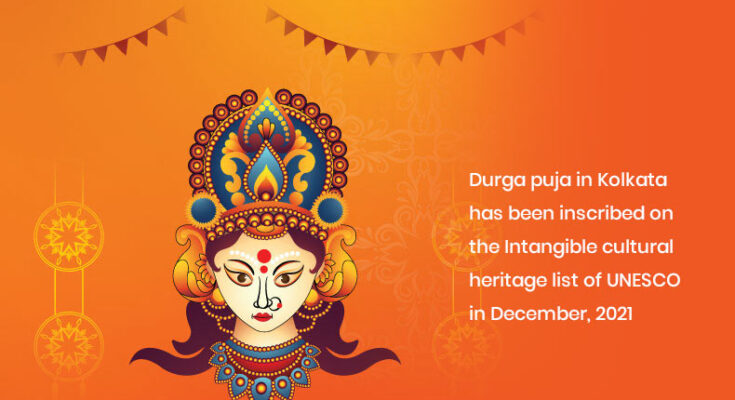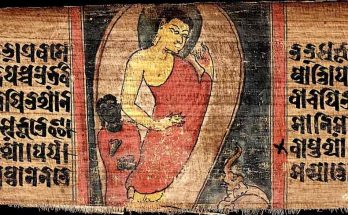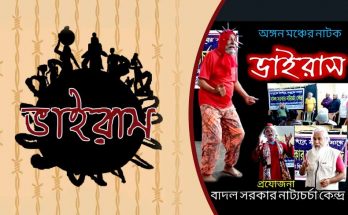A glimpse of Kolkata Durga Puja after UNESCO recognition. Image Courtesy – Freepik
The UNESCO announcement has inspired the organizers of Kolkata Durga Puja to uplift Bengal’s cultural heritage as well as a creative art. The Chief Minister of West Bengal Mamata Banerjee is widely recognized as the biggest patron of the Durga Puja festival. She has been trying to take Bengali’s biggest celebration to the world diaspora. Now, the recognition of UNESCO has added a feather to its cap.
The celebration of Bengal is not only a celebration itself – it is involved with art, culture, music, revamping of ancient arts that are going to extinct, and simultaneously many industries are connected to it. The Durga Puja exposes the mastery of the artists and designers of Bengal to a specific platform. Even idols are exported to various countries long before starting the festival.
UNESCO on December 15, 2021 (Wednesday) added the festival of Durga Puja in Kolkata to its 2021 list of Intangible Cultural Heritage, giving international recognition to the biggest religious festival of the 331-year-old city, Kolkata. During this time of the festival, Kolkata truly becomes the “City of Joy”.
This year, Chief Minister of West Bengal, Mamata Banerjee granted Rs 60,000 as a donation to 43,000 community Durga Puja committees each. The amount of the grant was Rs 50,000 last year.
Indian traditional Yoga and Kumbh Mela got recognition in 2016 and 2017 respectively. Durga Puja was the only Indian festival to be enlisted among 20 events and traditional activities.
Read: Significance of the Character in Buddhist Literature
Specifically in Bengal, Durga Puja is not only a community festival – it is more than a festival of the Bengali community. It crosses the barrier of community, caste, religion, and ethnicity. People from all communities and religions participate and celebrate this festival spontaneously. We can find a bonding of relation in this time. It is a celebration of the full family, friends, colleagues, etc. Even the foreign tourists also participate in this festival time and enjoy themselves. This kind of family bonding one can never observe in European countries where adult children and parents participate in the festival together throughout the day and night.
The Durga Puja festival has a tremendous impact on the economy of Bengal. The innovation of art and culture we see in Bengal can never be observed in any other place. Cultural activities and the involvement of artisans and people are the main attraction of Durga Puja.
UNESCO told on its website, “Durga Puja is seen as the best instance of public performance of religion and art, and as a thriving ground for collaborative artists and designers. The festival is incorporated by large-scale installations and pavilions in urban areas, with traditional Bengali drumming and veneration of the Goddess. During the event, the divides of class, religion, and ethnicities collapse as crowds of spectators walk around to admire the installations”.Defining the Durga Puja festival as an Intangible Cultural Heritage, UNESCO has said, “The term ‘cultural heritage’ has changed content considerably in recent decades, partially owing to the instruments developed by UNESCO. Cultural heritage does not end at monuments and collections of objects. It also includes traditions or living expressions inherited from our ancestors and passed on to our descendants, such as performing arts, oral traditions, social practices, rituals, festive events, knowledge, and practices concerning nature and the universe.”
One of some creative arts is presented below:
A famous community Durga Puja at Kolkata – Sree Bhumi Sporting Club
The theme of Creative Art – Vatican City, a Roman Catholic Church
Location – A small place in Lake Town urban area
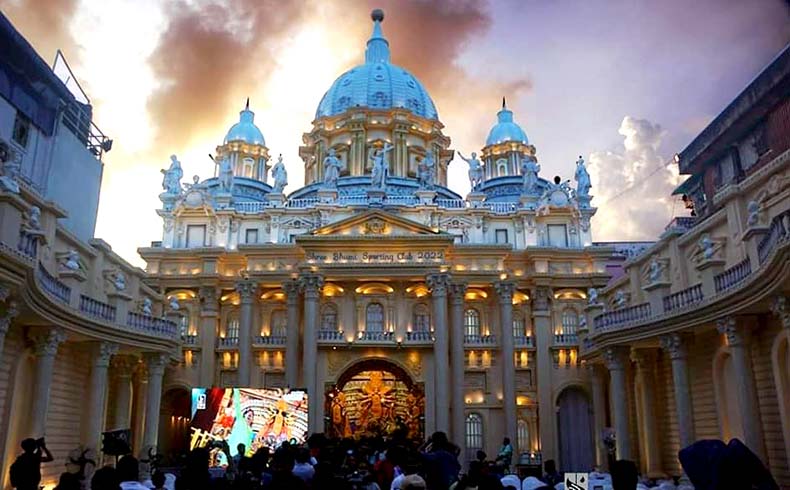
SreeBhumi Sporting Club, an example of creative art – front vision of Vatican City Church. Image Courtesy – Facebook
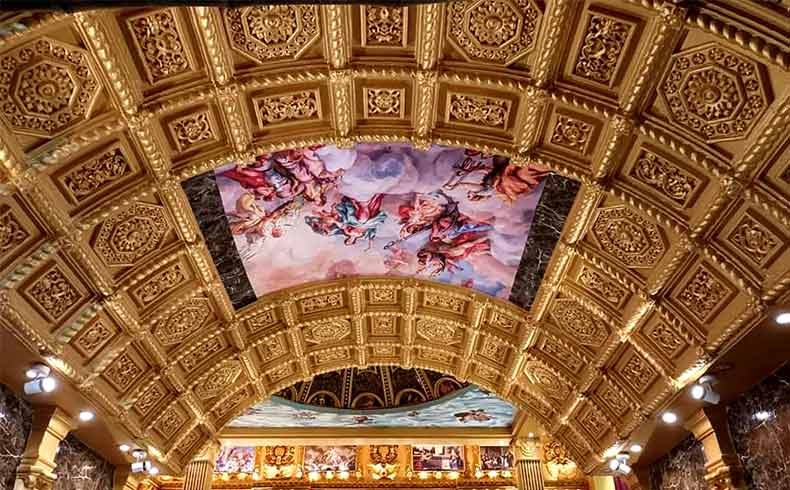
Durga Puja at SreeBhumi Sporting Club, an example of creative art – the inside decoration of Vatican City Church. Image Courtesy – Facebook
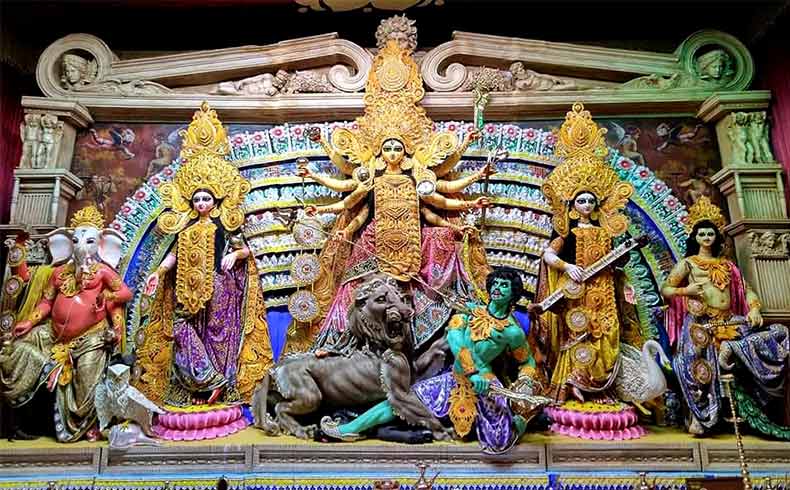
Goddes Durga, an example of Religious Heritage and Creative Art. Image Courtesy – Facebook
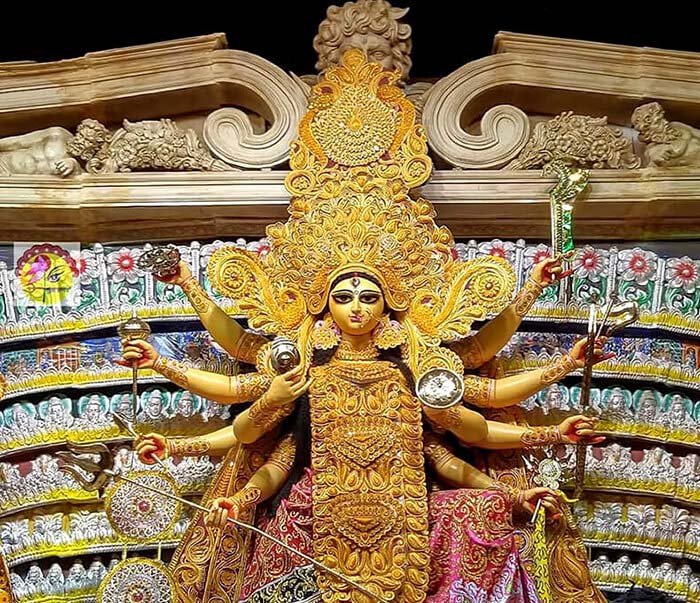
Goddes Durga idol, an exquisite example of creative art. Image Courtesy – Facebook
Sreebhumi Durga Puja 2022 Pandal – Theme of Creative Art – Vatican City of Europe. Image Courtesy – ANI News, YouTube.

